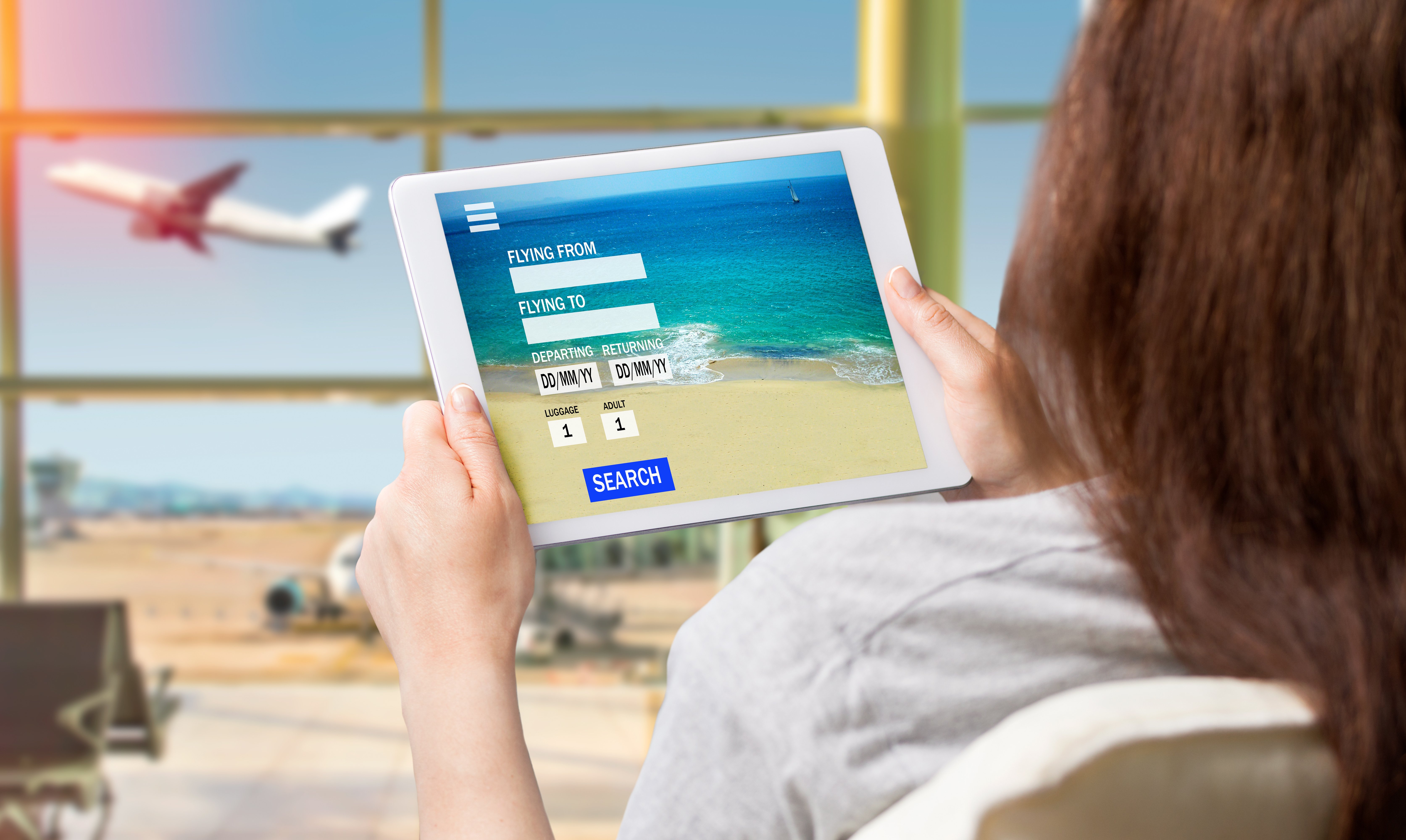The holiday travel season is upon us, and everyone is finalizing those last-minute plans. One integral part of holiday travel booking is purchasing airline tickets. As a blind person relying on a screen reader, I recently visited a relative who asked me for help purchasing her flights to and from her Christmas celebration. The only device I had on me was my smartphone, so I attempted to buy the tickets using this device. Unfortunately, I experienced many accessibility challenges.
In the remainder of this post, I will narrate my airline ticket search experience and discuss accessibility. As always, my main focus area will be screen readers.
Date Disaster
My relative preferred one airline, so I navigated to the relevant website. I easily found the "Search Flights" option on the homepage and activated it to proceed. However, this is where the accessible experience ended.
The next screen contained five options: selecting one-way or round-trip travel, a travel date selector, a number of travelers picker, a "To" and "From" airport selector, and a ticket type designation. I first attempted to choose the dates of travel. Activating the option brought me to a screen with a calendar grid for date selection.
While my screen reader spoke each month, date, and day of the week, it gave no instructions for selecting a departure or return date. I found the desired departure date and activated it. Then, I located the return date and activated it, hoping this would indicate the trip start and end dates. But activating the second date deselected the first.
After thoroughly exploring the screen using both manual navigation and direct touch, I couldn't figure out how to select two dates. I had to turn to a sighted person for assistance. They explained that two visually highlighted tabs at the top of the screen were labeled "Trip Start" and "Trip End." My screen reader could not detect these tabs. Once the sighted user manually pressed each tab, I could finally select the departure and return dates.
When I tried to dismiss the date picker and return to the flight search screen, I encountered another issue: the dismiss button, a tiny "X" in the top right corner, was incredibly difficult to locate with my screen reader. After several frustrating attempts, I found the button using direct touch navigation. Still, its small size and lack of accessibility features made it nearly impossible to use independently.
Airport Error
Next, I attempted to select the departure and arrival airports. Activating this option brought up two text fields labeled "Flying To" and "Flying From." As I began typing in each field using the virtual keyboard, airport suggestions appeared in a list below.
However, whenever I tried to move the screen reader focus to the suggestions using direct touch, the virtual keyboard disappeared, and the suggestions vanished. After several attempts, I overcame this issue by typing the full airport name and pressing the "Return" key. Luckily, this automatically selected the first suggestion by default. While I was able to proceed, this was an unnecessarily frustrating process.
Flight Display Failure
The remaining options—number of travelers, ticket type, and round-trip or one-way pickers—were set to the correct values by default. This setting was fortunate, as I suspect these elements may have had their accessibility issues.
Finally, I activated the "Search Flights" button. The flight results page loaded, and I began exploring with manual swipe navigation. I first looked for a results filter to refine the options. I eventually found a button labeled "Sort and Filter" and activated it.
This filter menu was one of the most inaccessible interfaces I've ever encountered. Direct touch navigation didn't work; every exploration attempt produced error notifications. Manual navigation was possible, but the interface was a jumble of overlapping elements. My screen reader announced content from the main page and the filter menu simultaneously, making it impossible to make sense of the options. Worse, there were no actionable elements like radio buttons or checkboxes—just plain text.
At this point, my only option was to manually scroll through hundreds of flight options, a task so inefficient and frustrating that I handed the phone to a sighted person. This website, with its many accessibility issues, could not be used independently.
Takeaway: Accessibility Is Business-Critical
This experience highlights a harsh reality: inaccessible websites don't just frustrate users—they exclude them. For businesses, especially in industries like travel, the implications are significant. An inaccessible date picker or unusable filter menu can quickly turn potential customers away, leading to lost revenue and diminished loyalty.
The good news is that some companies are stepping up to create more inclusive travel experiences. Skyscanner, for example, made accessibility a priority and saw real improvements in usability and brand reputation. By focusing on accessibility, they provided a better experience for everyone. They showed their commitment to inclusivity—an essential advantage in such a competitive industry.
Travelers expect seamless, user-friendly experiences. Businesses that don't address accessibility are not just leaving customers behind—they're leaving opportunities behind, too. As regulations tighten and customer expectations grow, now is the time to prioritize accessibility.
Learn how accessibility can strengthen your brand and help you stand out. Explore Skyscanner's accessibility journey.
Editor's Note: This post is by our frequent marketing contributor, Michael Taylor, and reflects his personal opinions and experiences. Read more about Michael and some other posts on his experience online here.
This blog, originally published earlier, focused on airline accessibility. We’ve updated it with Michael’s firsthand perspective, highlighting how accessibility impacts real customers.






